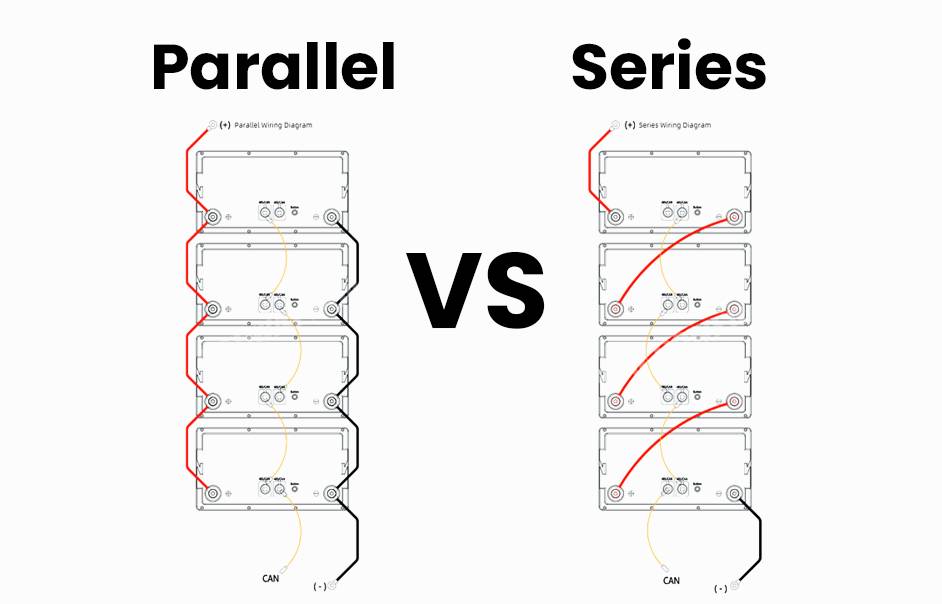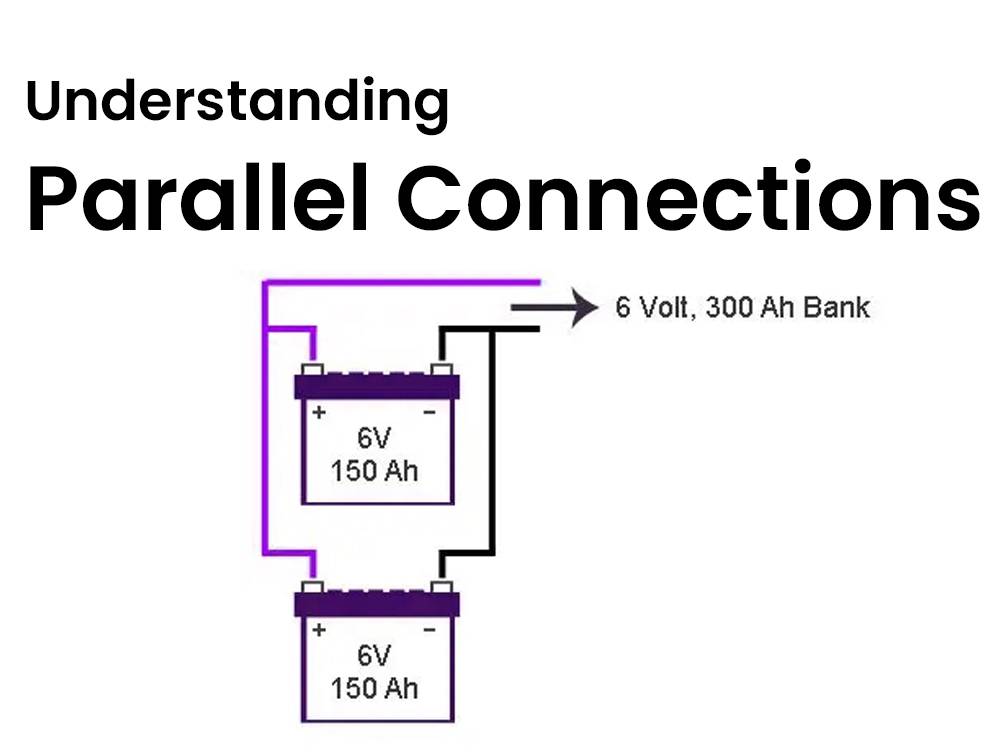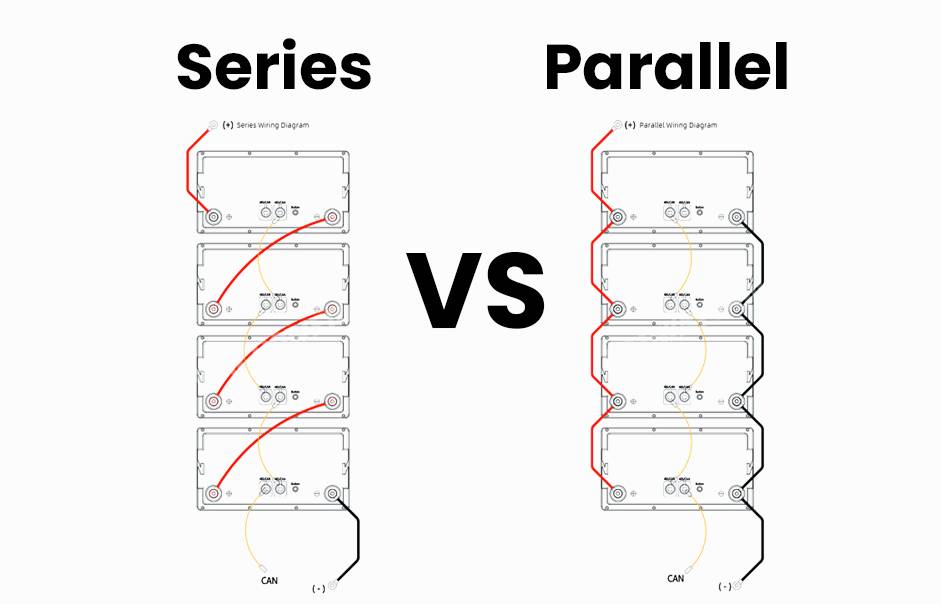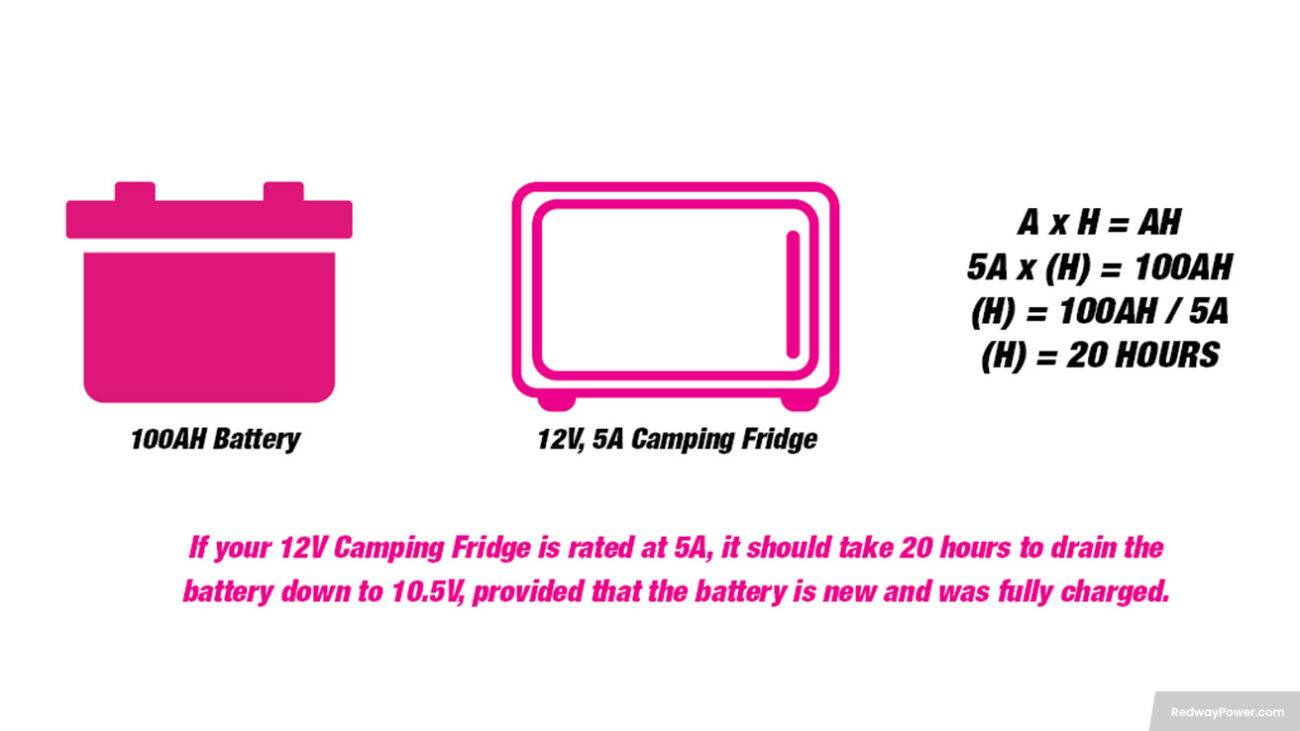- Forklift Lithium Battery
-
48V
- 48V 210Ah
- 48V 300Ah
- 48V 420Ah (949 x 349 x 569 mm)
- 48V 420Ah (950 x 421 x 450 mm)
- 48V 456Ah
- 48V 460Ah (830 x 630 x 590 mm)
- 48V 460Ah (950 x 421 x 450 mm)
- 48V 460Ah (800 x 630 x 600 mm)
- 48V 460Ah (820 x 660 x 470 mm)
- 48V 500Ah
- 48V 560Ah (810 x 630 x 600 mm)
- 48V 560Ah (950 x 592 x 450 mm)
- 48V 600Ah
- 48V 630Ah
-
48V
- Lithium Golf Cart Battery
- 12V Lithium Battery
12V 150Ah Lithium RV Battery
Bluetooth App | BCI Group 31
LiFePO4 Lithium
Discharge Temperature -20°C ~ 65°C
Fast Charger 14.6V 50A
Solar MPPT Charging - 24V Lithium Battery
- 36V Lithium Battery
- 48V Lithium Battery
-
48V LiFePO4 Battery
- 48V 50Ah
- 48V 50Ah (for Golf Carts)
- 48V 60Ah (8D)
- 48V 100Ah (8D)
- 48V 100Ah
- 48V 100Ah (Discharge 100A for Golf Carts)
- 48V 100Ah (Discharge 150A for Golf Carts)
- 48V 100Ah (Discharge 200A for Golf Carts)
- 48V 150Ah (for Golf Carts)
- 48V 160Ah (Discharge 100A for Golf Carts)
- 48V 160Ah (Discharge 160A for Golf Carts)
-
48V LiFePO4 Battery
- 60V Lithium Battery
-
60V LiFePO4 Battery
- 60V 20Ah
- 60V 30Ah
- 60V 50Ah
- 60V 50Ah (Small Size / Side Terminal)
- 60V 100Ah (for Electric Motocycle, Electric Scooter, LSV, AGV)
- 60V 100Ah (for Forklift, AGV, Electric Scooter, Sweeper)
- 60V 150Ah (E-Motocycle / E-Scooter / E-Tricycle / Tour LSV)
- 60V 200Ah (for Forklift, AGV, Electric Scooter, Sweeper)
-
60V LiFePO4 Battery
- 72V~96V Lithium Battery
- Rack-mounted Lithium Battery
- E-Bike Battery
- All-in-One Home-ESS
- Wall-mount Battery ESS
-
Home-ESS Lithium Battery PowerWall
- 24V 100Ah 2.4kWh PW24100-S PowerWall
- 48V 50Ah 2.4kWh PW4850-S PowerWall
- 48V 50Ah 2.56kWh PW5150-S PowerWall
- 48V 100Ah 5.12kWh PW51100-F PowerWall (IP65)
- 48V 100Ah 5.12kWh PW51100-S PowerWall
- 48V 100Ah 5.12kWh PW51100-H PowerWall
- 48V 200Ah 10kWh PW51200-H PowerWall
- 48V 300Ah 15kWh PW51300-H PowerWall
PowerWall 51.2V 100Ah LiFePO4 Lithium Battery
Highly popular in Asia and Eastern Europe.
CE Certification | Home-ESS -
Home-ESS Lithium Battery PowerWall
- Portable Power Stations
Which Is Better: Wiring Batteries in Series or Parallel?

Wiring batteries can be done in two primary configurations: series and parallel. Each method has distinct advantages and disadvantages, influencing voltage, capacity, performance, and safety. Understanding these differences helps you choose the best setup for your specific needs.
The choice between series and parallel wiring depends on your needs. Series wiring increases voltage, making it suitable for high-voltage applications, while parallel wiring boosts capacity, allowing for longer runtimes. Consider your specific power requirements and application to determine the best configuration.
What Are the Key Differences Between Series and Parallel Wiring?
In series wiring, voltages add up while capacity remains the same. In contrast, parallel wiring keeps the voltage constant but combines capacities. For example, two 12V 100Ah batteries in series produce 24V at 100Ah, while in parallel, they yield 12V at 200Ah.
The main difference between series and parallel wiring lies in how the batteries are connected and how this affects voltage and capacity:
- Series Wiring: In a series configuration, batteries are connected end-to-end, which adds their voltages together while keeping the capacity (amp-hours) the same. For example, two 12V batteries in series will produce a total output of 24V.
- Parallel Wiring: In a parallel configuration, all positive terminals are connected together, and all negative terminals are connected together. This setup maintains the same voltage as a single battery but increases total capacity. For instance, two 12V batteries with 100Ah each wired in parallel will provide 12V at 200Ah.
Chart: Series vs. Parallel Wiring
| Configuration | Voltage Output | Capacity (Ah) |
|---|---|---|
| Series | Voltage adds up (e.g., 24V) | Same as one battery (e.g., 100Ah) |
| Parallel | Voltage remains the same (e.g., 12V) | Capacity adds up (e.g., 200Ah) |
What Are the Advantages of Wiring Batteries in Series?
Wiring batteries in series allows for higher voltage outputs without needing additional batteries. This setup is simpler and often more cost-effective due to fewer connections required. It’s ideal for applications that demand higher voltage levels from lower voltage batteries.
Wiring batteries in series offers several benefits:
- Higher Voltage Output: Ideal for applications that require higher voltage levels, such as electric vehicles or larger power systems.
- Simplified Configuration: Fewer connections are needed compared to parallel setups, making installation simpler.
- Cost Efficiency: Fewer batteries may be required to achieve desired voltage levels, reducing overall costs.
Chart: Advantages of Series Wiring
| Advantage | Description |
|---|---|
| Higher Voltage Output | Suitable for high-voltage applications |
| Simplified Configuration | Easier installation with fewer connections |
| Cost Efficiency | Requires fewer batteries for higher voltage |
What Are the Advantages of Wiring Batteries in Parallel?
Parallel wiring increases overall capacity, providing longer runtimes and higher current output. This configuration offers redundancy; if one battery fails, others can still supply power. It also allows for easier maintenance since each battery operates independently.
Parallel wiring also has distinct advantages:
- Increased Capacity: Provides more amp-hours, allowing devices to run longer without needing a recharge.
- Redundancy: If one battery fails, others can continue to provide power, enhancing reliability.
- Lower Current Draw: Reduces strain on each battery, potentially extending their lifespan.
Chart: Advantages of Parallel Wiring
| Advantage | Description |
|---|---|
| Increased Capacity | Longer runtime for devices |
| Redundancy | Enhanced reliability if one battery fails |
| Lower Current Draw | Reduces strain on individual batteries |
How Do Performance and Efficiency Compare Between the Two Configurations?
Performance varies based on application; series configurations excel in high-voltage needs, while parallel setups are better for high-capacity requirements. Efficiency can differ as well; series connections may experience less energy loss due to lower current flow compared to parallel systems.
Performance varies significantly between series and parallel configurations:
- Series Configuration: Offers higher voltage but does not increase capacity; useful when higher voltages are needed without increasing weight or size.
- Parallel Configuration: Increases capacity while maintaining voltage; ideal for applications requiring longer run times without needing higher voltages.
Chart: Performance Comparison
| Configuration | Voltage Output | Capacity (Ah) |
|---|---|---|
| Series | Higher voltage | Same as one battery |
| Parallel | Same voltage | Increased capacity |
What Safety Considerations Should Be Taken into Account?
When wiring batteries, ensure all batteries are of the same type and capacity to avoid imbalances. Check connections for tightness to prevent arcing or short circuits. Use appropriate fuses or circuit breakers to protect against overcurrent situations and always follow safety guidelines during installation.
Safety is paramount when wiring batteries:
- Overcurrent Risks: In parallel configurations, ensure that cables can handle increased current to avoid overheating.
- Voltage Compatibility: Ensure that all batteries used are of similar type and age to prevent imbalances that can lead to failures.
- Proper Fusing: Use appropriate fuses to protect against short circuits or overloads.
Chart: Safety Precautions
| Precaution | Description |
|---|---|
| Overcurrent Risks | Ensure cables can handle maximum current |
| Voltage Compatibility | Use similar battery types and ages |
| Proper Fusing | Protect against short circuits |
Tips for Battery Wholesale Buyers: How to Choose a Reliable Manufacturer?
When considering wholesale purchases or OEM orders for batteries, it’s crucial to choose a reliable manufacturer. Here are some tips:
- Research Manufacturer Reputation: Look for established companies like Redway Power, known for quality and reliability.
- Evaluate Product Range: Ensure they offer various battery types suitable for your needs.
- Check Certifications: Confirm compliance with industry standards.
For OEM orders from a reputable manufacturer like Redway Power, which has over 13 years of experience in lithium battery manufacturing, ensure clear communication regarding specifications and delivery timelines. This approach helps secure high-quality products that serve as excellent alternatives to lead-acid batteries.
Redway Power Expert Views
“Understanding how to properly wire batteries is essential for maximizing efficiency and safety in any application. Whether you choose series or parallel configurations, knowing your power requirements will guide you towards the best setup,” states an expert from Redway Power.

Wiring 12v Batteries in Series or Parallel + Charging Tips!
FAQs
What is the primary purpose of connecting batteries in parallel?
How does connecting batteries in parallel increase overall capacity?
What happens to the battery voltage when batteries are connected in parallel?
What considerations should be taken into account when connecting batteries in parallel?
Can batteries with different amp-hour ratings be connected in parallel?
Yes, batteries with different amp-hour ratings can be connected in parallel without major issues. However, it is important to consider the battery chemistries, as different chemistries may have different charging voltages. For optimal performance, ensure that the batteries have the same chemistry when connecting them in parallel.

What are the benefits of connecting batteries in parallel?
How does connecting batteries in parallel impact system reliability?
What precautions should be taken when connecting batteries in parallel?
What are the potential downsides of connecting batteries in parallel?
How can I ensure optimal performance when connecting batteries in parallel?
How to charge 12-volt batteries connected in parallel?
Charging 12-volt batteries connected in parallel requires careful consideration to ensure optimal performance. First, it’s crucial to use a compatible charger that can handle the total voltage of all the batteries combined. Additionally, make sure the charger is designed for parallel charging to avoid any potential issues.
When connecting multiple batteries in parallel for charging, each battery should have its own set of cables and connections to prevent imbalances between them. This helps maintain equal charging levels across all batteries and prolongs their lifespan.
Monitoring the charging process is essential when dealing with parallel-connected batteries. Regularly check the voltage levels of each battery to ensure they are all being charged evenly and none are overcharged or undercharged.
By following these steps and staying attentive throughout the charging process, you can effectively charge 12-volt batteries connected in parallel without compromising their performance or longevity.
Is battery charging better in series or parallel?
When it comes to charging batteries, the debate between series and parallel connections is a common one. Each configuration has its advantages and considerations. In series, the voltage increases while capacity remains constant; in parallel, capacity adds up while voltage stays the same.
Charging batteries in series can be more complex as each battery needs to reach the same level of charge for optimal performance. On the other hand, parallel charging allows for easier management of individual battery health without affecting others in the circuit.
The choice between series or parallel charging often depends on specific requirements such as power needs and system design. Understanding these differences can help you make an informed decision based on your unique circumstances.
Batteries in parallel vs series – Which is safer?
When it comes to comparing the safety of batteries connected in parallel versus series, there are important factors to consider. In a parallel connection, each battery maintains its voltage while increasing the overall capacity. This setup can be safer because if one battery fails, the others will continue working.
On the other hand, connecting batteries in series increases the voltage while keeping the capacity constant. While this configuration may offer some advantages in certain applications, such as powering devices requiring higher voltages, it also poses potential risks. If one battery in a series connection fails or is damaged, it can impact all batteries in the chain.
Whether parallel or series connections are safer depends on various factors like proper installation and maintenance practices. It’s crucial to follow manufacturer guidelines and ensure regular inspections to mitigate any potential safety hazards when working with multiple batteries.
Are parallel connections more power-sufficient than series connections?
When it comes to determining whether parallel or series connections are more power-sufficient, it ultimately depends on the specific requirements of your application. Parallel connections are generally better suited for applications that require higher current output and longer run times, such as in solar energy systems or electric vehicles. On the other hand, series connections may be more appropriate for applications where higher voltage levels are necessary, like in grid-tied battery banks.
Understanding the differences between batteries connected in parallel versus series is crucial in ensuring optimal performance and safety for your electrical system. Whether you choose to connect batteries in parallel or series, always prioritize proper installation practices and regular maintenance to maximize the lifespan and efficiency of your battery bank.
Is Series or Parallel More Powerful?
Can You Put LifePO4 Batteries in Series?
Are all Ionic lithium batteries capable of series connections? Not all ionic lithium batteries are designed for series connections. It’s crucial to check the manufacturer’s specifications and recommendations to ensure compatibility and safety when connecting lithium batteries in series.
Can you charge several batteries connected in series? Yes, you can charge several batteries connected in series, but you need a charger specifically designed for the total voltage of the series configuration. Ensure that the charger matches the combined voltage of the batteries in series.
What should you ensure before connecting batteries in series? Before connecting batteries in series, ensure they have the same type, capacity, and charge level. Mismatched batteries can lead to uneven charging, reduced performance, or damage.
Is it always safe to connect Ionic lithium batteries in series? It’s not always safe to connect ionic lithium batteries in series unless they are specifically designed for such configurations. Using batteries with different specifications or capacities can cause safety issues. Always follow the manufacturer’s guidelines.
Can Ionic lithium batteries be connected in series? Ionic lithium batteries can be connected in series if they are designed for such configurations. Ensure that the batteries have matching specifications and follow manufacturer recommendations to avoid safety risks.
Are there any exceptions to whether LiFePO4 batteries can be connected in series? While LiFePO4 (Lithium Iron Phosphate) batteries can generally be connected in series, exceptions exist. Ensure that all batteries are of the same type, capacity, and charge level, and use a compatible BMS (Battery Management System) to monitor and balance the cells.
Can LiFePO4 batteries be hooked up in series? Yes, LiFePO4 batteries can be hooked up in series to increase the voltage. Ensure that all batteries are of the same type, capacity, and charge state, and use a BMS to manage the battery pack safely.

















